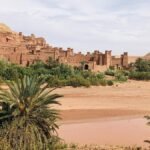With a country of this cultural diversity and the perfect geographical position, deciding on the best time to visit Morocco is vital. Morocco’s weather is extremely varied across different cities, so you must take this into account when thinking about the perfect time to visit.
Where is Morocco?
Bordered by the Strait of Gibraltar and the Mediterranean Sea, Morocco lies in the Northwest corner of the African continent only 14.5km away from Europe. More specifically, Morocco draws its borders to the West by the Atlantic Ocean, the Mediterranean Sea to the North, Mauritania to the Southeast and Algeria to the East.
Why is Morocco a Huge Touristic Attraction?
The Moroccan Kingdom is widely known for its history, vibrant culture, versatile cuisine but mostly its fascinating landscapes and mild weather. Over the years, Morocco has succeeded remaining a huge touristic attraction for its fusion of both a Mediterranean and a tropical climate depending on where and when you choose to be.
How Does Climate Change from One City to Another?
Most of Morocco’s northern coastline enjoys a typical Mediterranean climate with temperatures ranging from the not so scorching hot 30°C in summers and the rarely cold 20°C winters.
The further you move inland, the climate changes from that of a Mediterranean country to a tropical one. Marrakech is one of those cities famous for its warm winters and typically hot sizzling summers.
However, it does not stop there! As you draw nearer the Atlas Mountains, you can enjoy European like winters in the record holding city of the lowest temperature ever observed in Africa: Ifrane.
In this article, we will go through the distinct features of Morocco’s typography, the properties of each Moroccan city, and the best time to visit Morocco.
When is the Best Time to Visit Morocco?
A huge misconception about Morocco is it being a never-ending desert with a scorching hot weather and winters rarely ever peeking through. While the Moroccan Sahara does in fact constitute a large chunk of the Moroccan land, the remaining parts of the country enjoy either a typical Mediterranean four-season climate or a tropical warm, moderate and maritime climate.
Typically, the best time to visit Morocco is during the spring season. Across the country, you will find the weather to be breezy, warm and pleasant as the infamous Moroccan harsh winter days just closed to an end.
Thanks to the strong Moroccan rainy season, however, Morocco’s distinct physical features lying at high elevations about 2600 feet above sea level allow for chains of mountains and wild woods to come back to life. Tangier, Tetouan and the rest of the Northern cities enjoy a cool and breezy season around spring days.
As you change directions down to the Atlantic coast, Casablanca, Rabat, Kenitra and many more of the coastal cities enjoy a cool, humid and breezy sub-Mediterranean climate almost like that of Los Angeles. The further you move from there, the climate becomes less humid and more on the warmer side.
Different City, Different Climate
The climate in Morocco varies depending on the topographical zone you are at. Typically, the country has three main topographical zones: mountains in the northern and interior areas, grassy plains for agriculture in the coastal areas and Sahara valleys down the south with extreme climates.
Stretching for about 2500km through Morocco, Algeria and Tunisia, the Atlas Mountains are a distinct feature of the Moroccan landscape. The climate in those areas is mostly Mediterranean where mountains and cities surrounding them witness snow and harsh winters.
Northern coastal regions, however, enjoy mild and humid seasons. Temperatures vary from 10°C in winters to average 20°C in summers. Southern and Eastern areas in Morocco witness a complete different climate distinct for being very hot and dry.
That is to say, the climate in Morocco changes depending on where you are in the country, and the time of year you visit. And so, when is the best time to visit Morocco’s most popular touristic destinations?
When is the Best Time to Visit Morocco’s Touristic Destinations?
Tangier, located on the bay of the Strait of Gibraltar, is the famous getaway to Europe and the recent port and principal city of Morocco. On the Northern part to the Atlantic coast lies the country’s political capital Rabat. Less than 90 km away from the capital, you find Morocco’s economic centre and largest city, Casablanca, encompassing a population of nearly 3.36M.
Four hours’ drive from Tangier Northern inland Morocco you find Fez, the spiritual and cultural capital of Morocco home to the oldest university in the world as well as the country’s second largest city. Further down the South lies Morocco’s famous inland Marrakech, the Red City, the former imperial city of Morocco and the most visited touristic destination in Africa.
600km away from Marrakech lies the gate to the Moroccan Sahara: Merzouga. Merzouga is a town situated near to the Erg Chebbi sand dunes of a 360km from Zagora. And so, when is the best time of year to enjoy these touristic destinations to a full capacity?
When is the Best Time to Visit Tangier?
Tangier, located in the northernmost point of Morocco, follows a more Mediterranean climate pattern. Summers tend to be cool, humid with occasional coastal winds blowing inland while winters are cool but not much extremity on either side.
The best time to visit Tangier is without a doubt during the early weeks of spring season. Reaching 26°C on a hot day, the weather becomes milder as temperature increases compared to the chill rainy winter days.
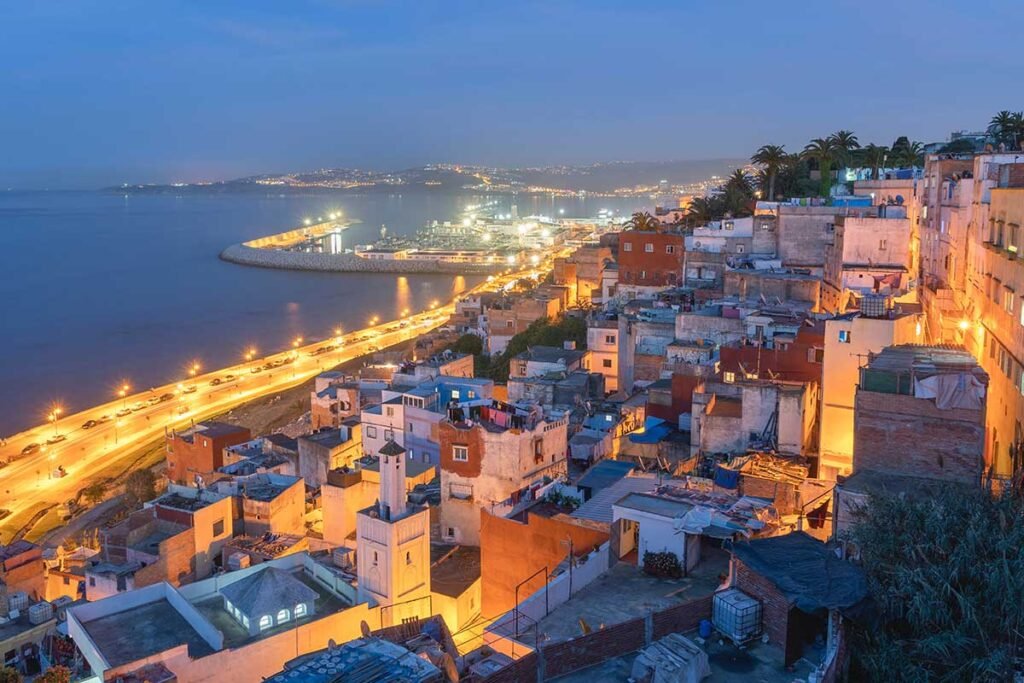
During the spring season, Tangier’s best hiking areas and natural landscapes such as Cape Spartel, Sloukia, Rmilat and a lot more become more vibrant against the bright clear skies and the crispy blue Mediterranean Sea. Explore Tangier through a 4-Day tour from Marrakech to Tangier via Chefchaouen.
When is the Best Time to Visit Rabat and Casablanca?
Further down the Atlantic coastline, Casablanca and Rabat are well-recognized for their sub-Mediterranean climate. The cold Canary Current intensifies the rainless conditions of such cities while keeping moderate temperatures.
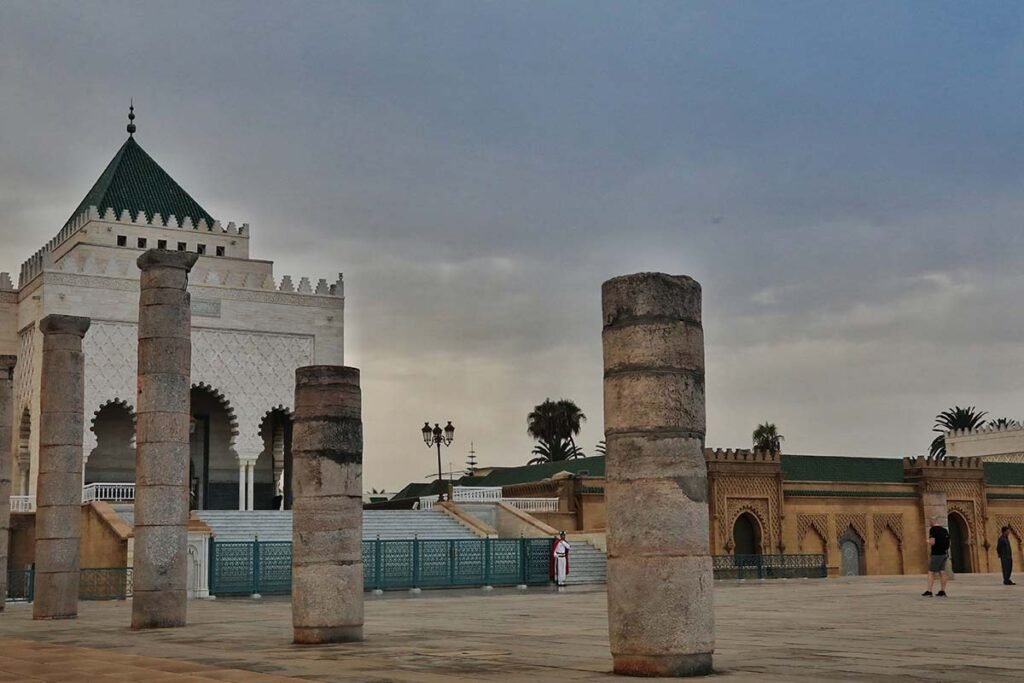
Casablanca and Rabat are the perfect destination for an open vacation. Apart from a slight change in temperatures, the climate in these cities remains enjoyable throughout the year. Their proximity to the Atlantic Ocean creates a moderate maritime climate with mild winters and cool summers.
When is the Best Time to Visit Fez?
Located to the northwest of the Atlas Mountains, Fez has a typical four-seasons Mediterranean climate only each season tends to be more conspicuous than the other does.
Because of its proximity to the Middle Atlas Mountains (only 101km away), winters in Fez are definitely on the harsher side with temperatures ranging from an average 3.8°C to a maximum of 16.2°C.
On the other hand, summers in the cultural and spiritual capital of Morocco are like those of Marrakech with temperatures averaging from 31°C to 48°C.
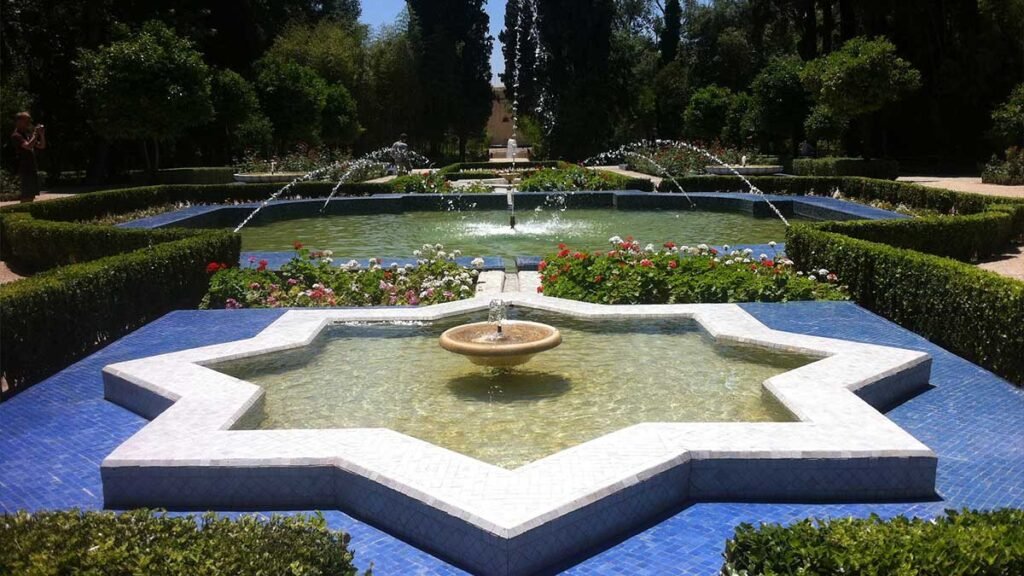
If you are fan of the cold weather, the best time to visit Fez is winter. Only few kilometres away from the city, you arrive at Dayat Aoua embarking by that on a journey within the Atlas Mountains.
From there, you can explore charming cities such as Immouzzar, Ifrann, El-Hajab and many more tempered with a European vibe and a Christmassy like atmosphere.
When is the Best Time to Visit Marrakech?
Around three hours south of Casablanca, temperatures are elevated and cities such as the Red City Marrakech are sizzling in summers soaring to nearly 50°C.
Marrakech is distinct for its semi-arid climate though it is not a desert. The red city lies north the Atlas Mountains making many of the natural landscapes near it prone to the harsh rainy and snowy winters by contrast to Marrakech’s dry and hot weather.
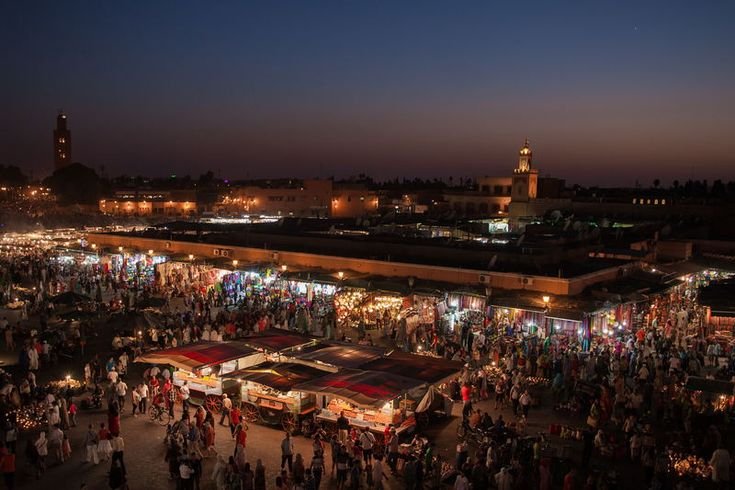
The best time to visit Marrakech is in winter and spring. Temperatures become more and more pleasant without the unbearably, desert-like, hot weather.
When is the Best Time to Visit the Moroccan Sahara?
The Moroccan Sahara is among the most arid destinations on earth. It runs as a long flat desert in the north and forms small mountains of a height up to 600 meters on the eastern side.
The estimated 266,000 sq Km land experiences sizzling hot summers reaching up to 50°C in July while averaging a temperature of 25°C on winters. The northern part of the Moroccan Sahara, however, can drop below freezing temperatures at night around December and January.
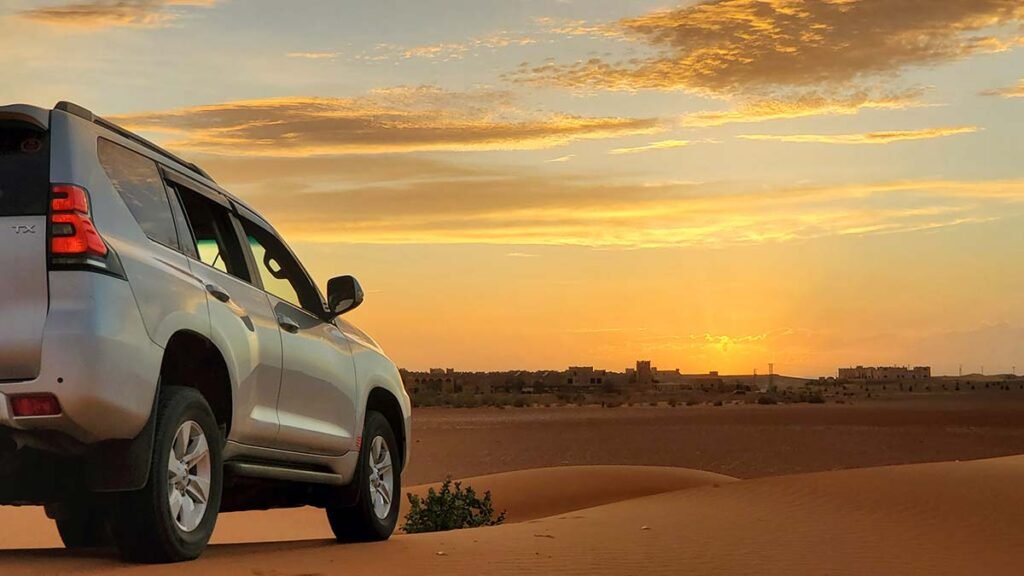
The best time to visit the Moroccan Sahara is either autumn or spring. Around the two seasons, temperatures drop significantly by comparison to the unbearably hot summers and freezing cold winters. Daytime temperatures are milder while sandstorms become less frequent. Learn more about the Sahara desert through a 14-Day breathtaking tour from Casablanca to Sahara Desert.

